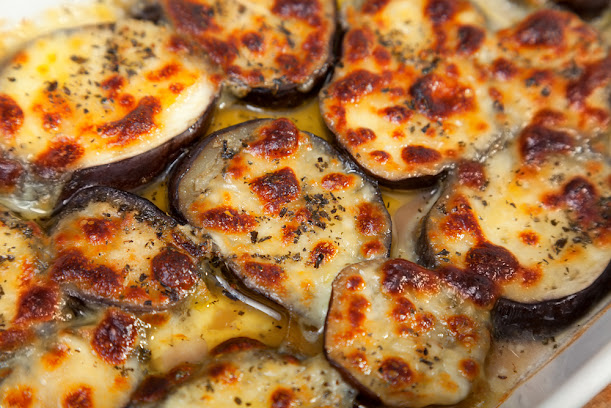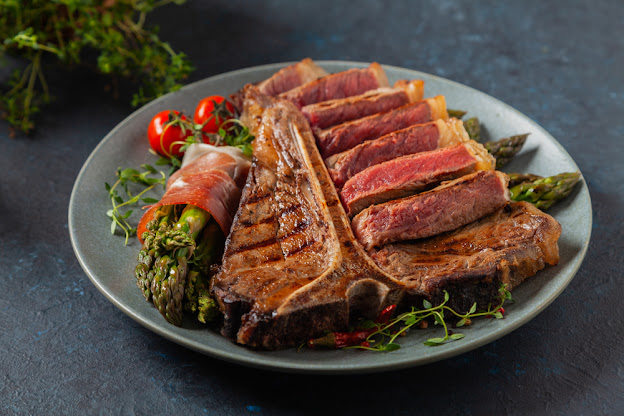- Get link
- X
- Other Apps
Cumin is one of my favorite spices; However, it's not a flavor that's overwhelmingly associated with Chinese food. Rather, it's best known as an ingredient in Indian curries, Mexican stews, and Mediterranean stews, so I was intrigued to see this recipe when I first got my hands on my copy. of Revolutionary Chinese Cookbook.
Not surprisingly, beef with cumin is a specialty of the Muslim minority in China, and it is likely that cumin was brought to China by spice traders on the Silk Route in
from the Middle East .
and India.
The ingredient list for this dish is short and simple, and while Dunlop notes that you could use prime cuts of steak like rump steak to prepare it, he uses smaller cuts like round and the chop because through thinly sliced against the grain, they become almost as tender as a naturally more tender cut of meat. I used a round piece of meat here to great effect, mostly because I had that in my freezer.
When left partially frozen and cut almost to paper with a very sharp knife, the top portion is as wonderfully tender as a porterhouse steak, but with the deep meat flavor typical of harder, well-trained muscles. At this point, I use the top round for almost all of my beef stir fry.
I have to admit that I changed the cooking method. Dunlop uses the "Velvet" firing process here; It's a method widely used by restaurants to cook meat to a smooth, tender result, but one I find complicated, wasteful, and extremely time-consuming when doing it at home. In short, it's a technique of marinating meat in a mixture containing corn or potato starch and sometimes egg white. It is then "soaked in oil" in an oil vat to fry for a very short time until partially cooked. The oil is then discarded or screened and stored. , and the meat is fried until cooked, along with the rest of the dish's ingredients.
For a family dinner, I don't see an overwhelming reason to dabble in the velor technique. It consumes too much oil, time and energy for the result, which is good but not good. - Good! Not good enough to make up for all the work, chaos, waste and dietary implications.
So I followed my own usual method of roasting meat instead and found the results to be more than satisfactory were; they were great. In transcribing the recipe, I used my own techniques rather than copying Dunlop's.
The meat was tender and flavorful, and smelled of the musky aroma of cumin, enhanced beautifully by the umami of the soy sauce. The garlic, scallion, and sesame oil rounded out the flavor, while the bright flavor of the fresh red chilli flesh really took the dish over the top.
The stir-fries came together quickly and easily and pair beautifully with a plate of gai lan and sweet red pepper simply roasted and flavored with ginger and fermented black. Beans.
This is another dish from
that is often seen on our table.
Cumin BeefIngredients:
1 pound trimmed beef steak, cut across the grain about 1/8-1/4″ thick thick 1 1 /2 tablespoons Shao Hsing wine
1 teaspoon light soy sauce
1 1/2 teaspoon dark soy sauce
1 tablespoon cornstarch
3 tablespoons oil peanuts2 teaspoons fresh ginger, peeled and chopped 1 tablespoon finely chopped fresh garlic
2 fresh red chillies (deseeded if desired) chopped2-4 teaspoons peanut flakes dried chili
2 teaspoons ground
cumin
1-3 tablespoons Shao Hsing wine as needed 2 spring onions, only the green part, thinly sliced at an angle1 tsp sesame oil. How:
Dunk the meat in the wine, soy sauce, and cornstarch until well coated. Leave to marinate at room temperature for at least 20 minutes.
Heat the wok over high heat until a thin wisp of smoke comes out. Add peanut oil and heat for another 30 seconds. Add the meat and reserve the remaining liquid marinade in the bowl.
Spread the beef in a single layer on the bottom of the wok and let sit undisturbed for at least a minute to brown. When you smell it starting to brown and the top edges are starting to turn greyish-brown, start frying. Fry quickly.
Sprinkle the meat with ginger, garlic, chili peppers, chili flakes and cumin while stirring. Continue frying until the red color is gone from the meat, adding some Shao Hsing wine to deglaze if needed. any browned parts of the bottom or sides of the wok . Add any liquid marinade and sauté until the liquid thickens and sticks to the meat.
Sprinkle with the tips of the chives and drizzle with sesame oil. Remove from the heat, stir a little more, then serve on a hot plate with steamed rice and a vegetable dish.
- Get link
- X
- Other Apps



Comments
Post a Comment